What is the form of Pyxis of al-Mughira 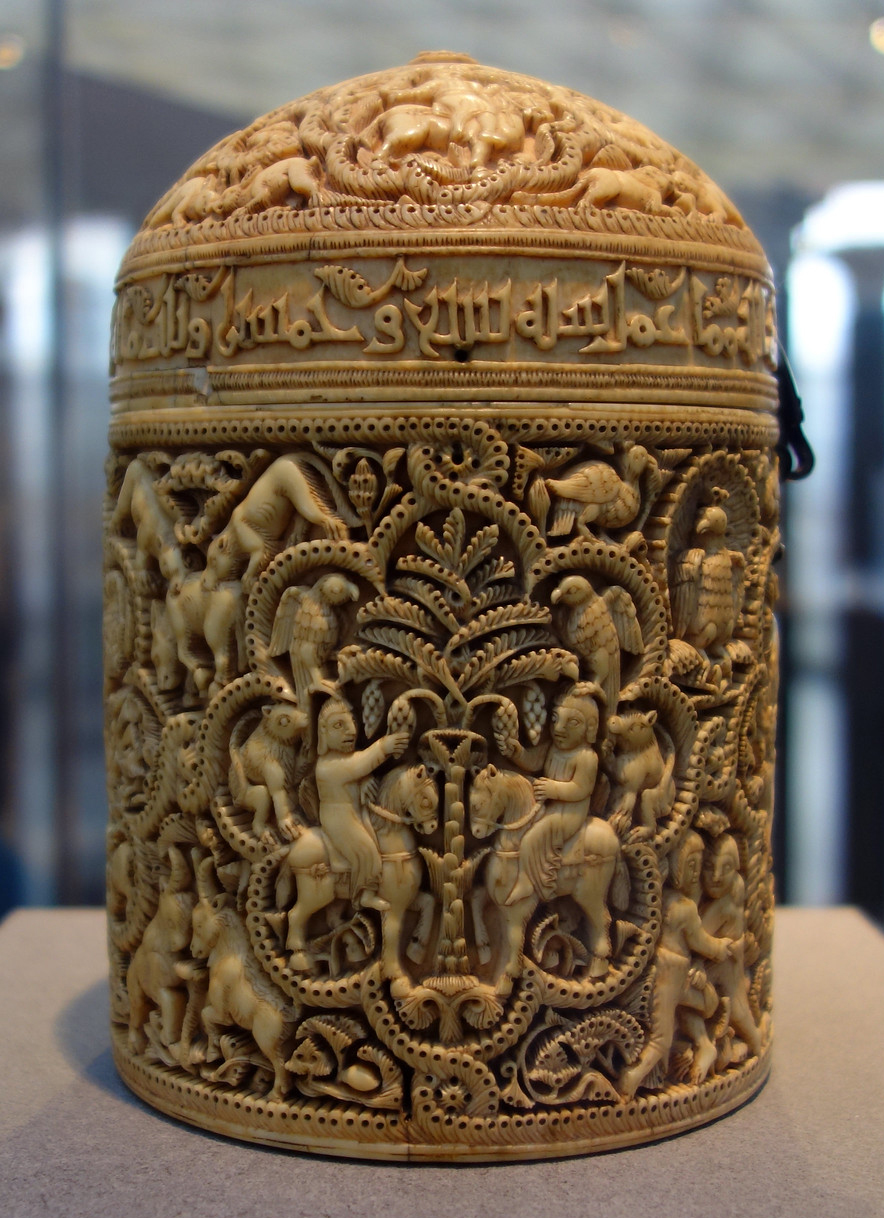
Horror Vacui. Geometric motifs.
What is the content, context and function of the Pyxis of al-Mughira?
Content: four sides of pleasure activities, hunting, falconry, sports and music.
Context: Calligraphic inscription in Arabic names the owner and asks for Allah's blessings. The Caliph is the succeeder of Muhammed.
Function: Container for jewelry, gems. Gift for the caliph's younger son.
What is the medium of The Ardabil Carpet?
Silk and Wool.
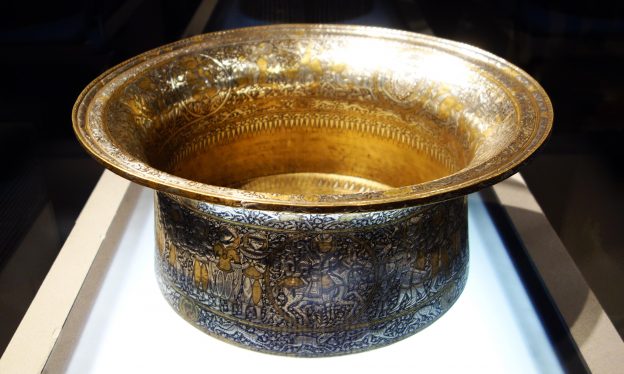 What is the content of the Basin?
What is the content of the Basin?
Signed by the artist six times. Hunting scenes alternate with battle scenes along the side of the bowl. Bottom of bowl is decorated with fish, eels, crabs, frogs, crocodiles.
What are all 5 identifiers of the Great Mosque (Masjid-e Jameh)?
Islamic: Persian. Ik-Khanid, Timurid, and Safavid Dynasties. c. 700 additions. Stone, brick, wood, plaster, ceramic tile. Isfahan, Iran.
Large central rectangular courtyard. Two story arcade. Directs to Mecca. Mihrabs. Muslim mosque. Southern iwan is an entry for a private space used by the sultan.
What is the exact date, medium, and location of Pyxis of al-Mughira?
968 CE. Loucre, Paris. Ivory.
What is the Folio from a Qur'an's function and form?
Function: Muslim holy book.
Form: The title of each chapter is scripted in gold, Kufic script (type of calligraphy), manuscript reads right to left
What is the Court of Lions?
Apart of Alhambra. Nasrid Dynasty. 1354-1391. Thin columns. Central fountain supported by 12 protective lions, Courtyard is divided into 4 parts: each symbolizing one of the four parts of the world. The courtyard is an architectural symbol of Paradise combining its gardens, waters and columns.
What is the function and content of The Ardabil Carpet?
Function: Prayer carpet used at a pilgrimage site of a Sufi saint.
Content: Huge carpet. Woven by ten people, probably men. Mosque lamps hang from the two of the pendants. Corner squinches also have pendants completing the feeling of looking into a dome.
What are all 5 identifiers of Mosque of Seli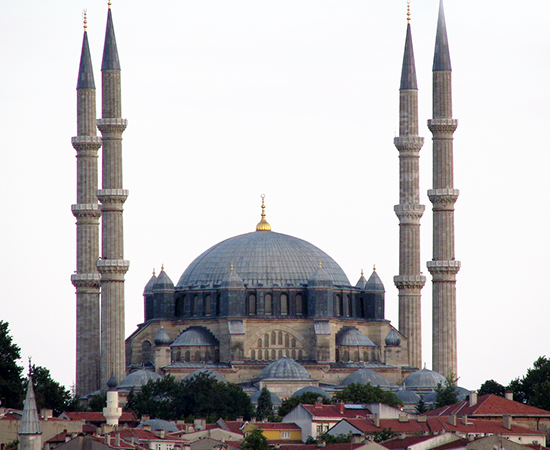 m?
m?
1568-1575. Brick and stone. Edirne, Turkey.
Extremely thin soaring minarets. Lit interior. Octagonal interior. Round dome. Mosque part of a complex, hospital, school and library. Inspired by Hagia Sophia.
What is the exact date, medium and location of the Basin?
1320-1340 CE. Brass inlaid with gold and silver. Louvre Paris.
 What is the exact date, medium, location of Folio from a Qur'an?
What is the exact date, medium, location of Folio from a Qur'an?
8th to 9th century. Ink, color and gold on parchment. Arab. Located in New York.
What is the context and function of the Folio from a Qur'an?
Context: People or living things are forbidden in Muslim art.
Function: Muslim Holy book, used for rituals.
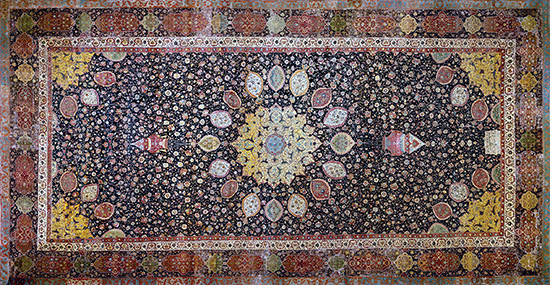 What is some context behind The Ardabil Carpet?
What is some context behind The Ardabil Carpet?
The world slave in the inscription has been variously interpreted but in the end it is someone who was charged with executing the carpet. The HUGE size of the carpet indicates that it was entrusted with men to make.
What the exact date and medium of Bahram Gur Fights the Karg?
1330-1340 CE. Ink and opaque watercolor, gold, and silver on paper.
What is the Hall of Sisters?
Nasrid Dynasty. 1354-1391 CE. Sixteen small windows placed at top. Abstract patterns. Refined interior. Built by the order of Mohammed V. In between these flagstones is a small fountain and a short canal from which water flows to the Court of the Lions.
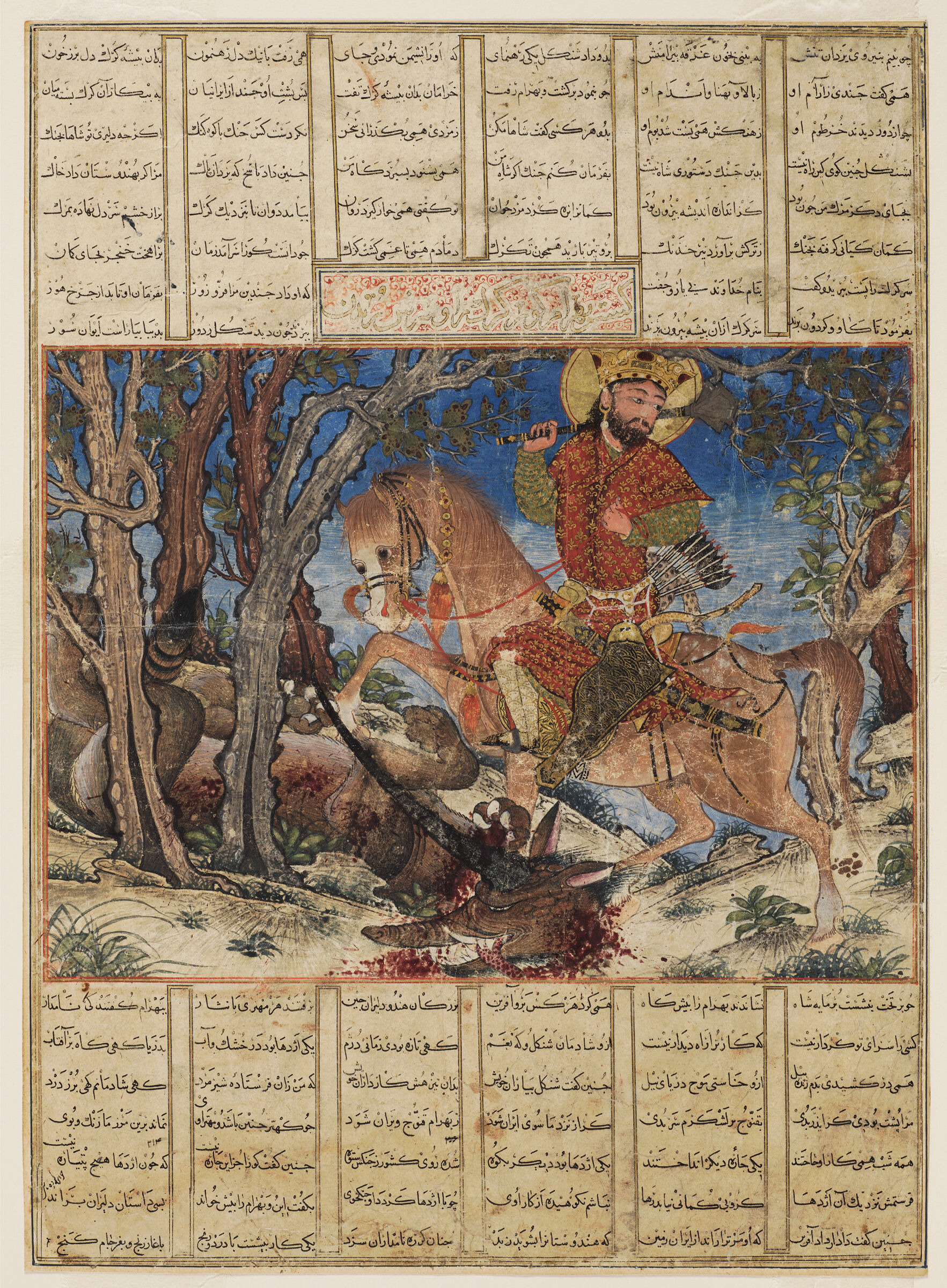 What is the context behind Bahram Gur Fights the Karg?
What is the context behind Bahram Gur Fights the Karg?
Commissioned by a high-ranking member of the Ilkhanid court. Lavish persian manuscript.
What is the content and function behind Bahram Gur Fights the Karg?
Content: Bahram Gur, Iranian king of the Sassanian dynasty, fights a Karg (horned wolf-mythological creature). Wears a crown and has a halo.
Function: Represents the ideal king with atmospheric perspective, calligraphy on the top and bottom.
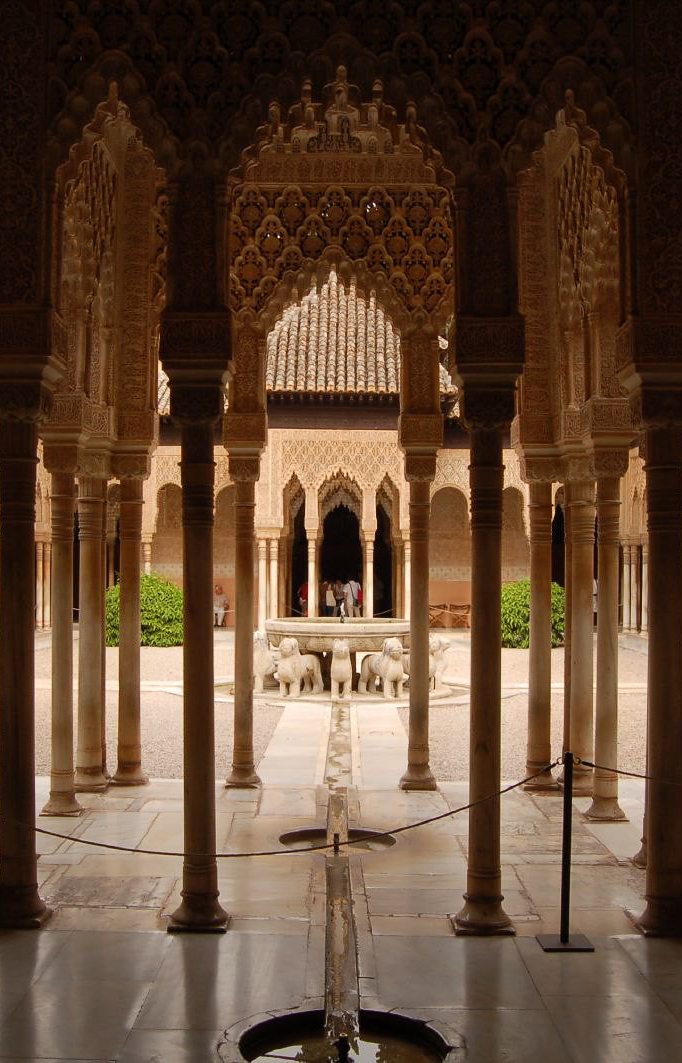 What are all 5 identifiers of Alhambra?
What are all 5 identifiers of Alhambra?
Nasrid Dynasty. 1354-1391. Whitewashed adobe stucco, wood, tile, paint, and gilding. Granada, Spain.
Airy interior. Contains palaces, gardens, fountains, courtyards. Palace of Nasrid sultans of southern Spain.
 What are all 5 identifiers of Great Mosque?
What are all 5 identifiers of Great Mosque?
Umayyad Dynasty. 785-786 BC. 8th-10th centuries. Stone masonry. Cordoba, Spain.
Double arched columns. Airy interior. Hypostyle mosque (no central focus). Muslim mosque. After a Spanish Christian reconquest, it was used for a church. Site originally a Roman temple dedicated to Janus. Horseshoe-shaped arches.
What are the functions behind the Basin?
Original use: ceremonial hand washing.
Later use: baptisms for the French Royal Family
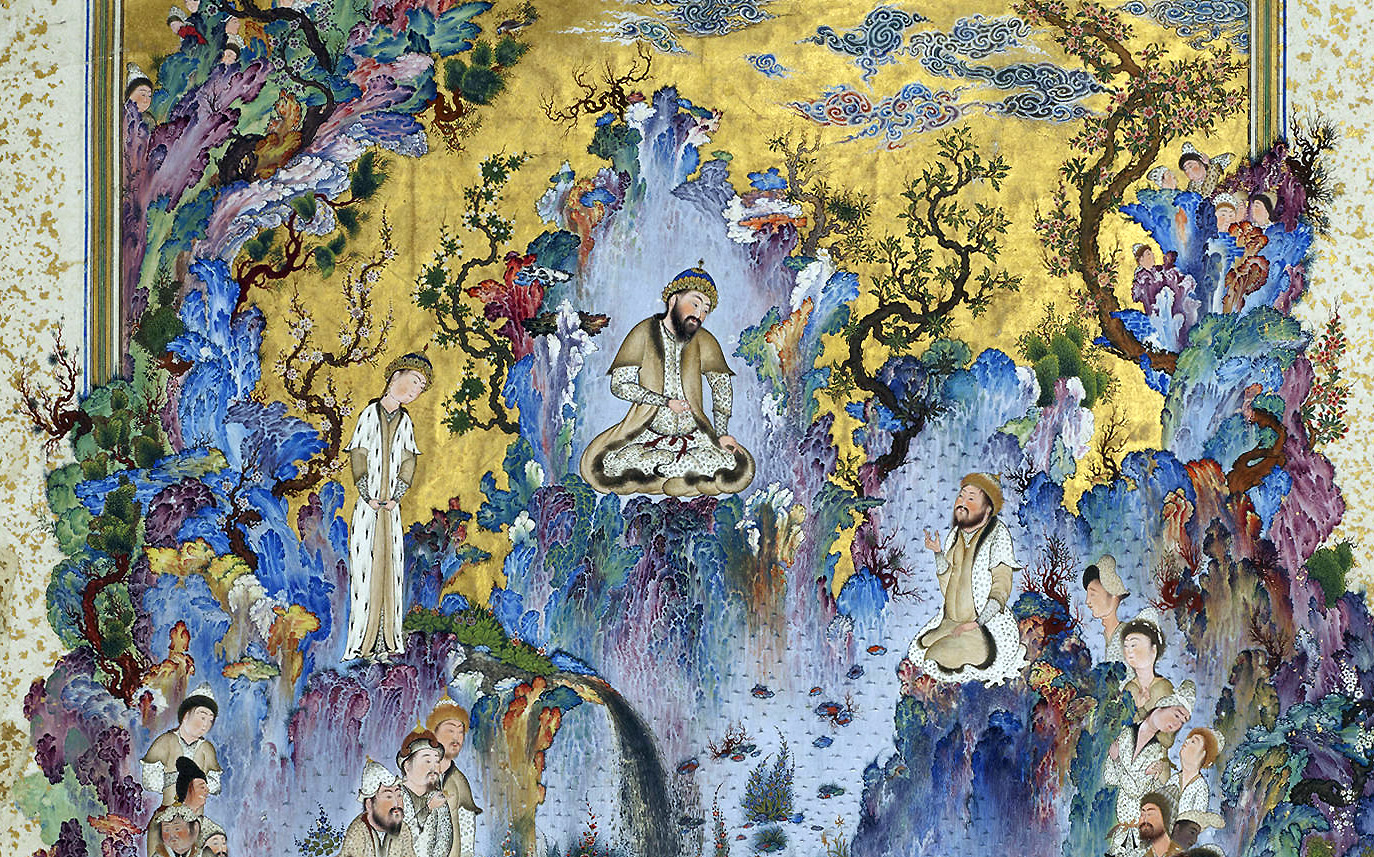 What are all 5 identifiers of The Court of Gayumars?
What are all 5 identifiers of The Court of Gayumars?
1552-1525. Ink, opaque watercolor, and gold on paper. Sultan Muhammad.
Persian manuscript. Shows the first king of Iran (Gayumars). On his left is his son. Vibrant colors. Calligraphy diminished. Harmony between man and landscape.
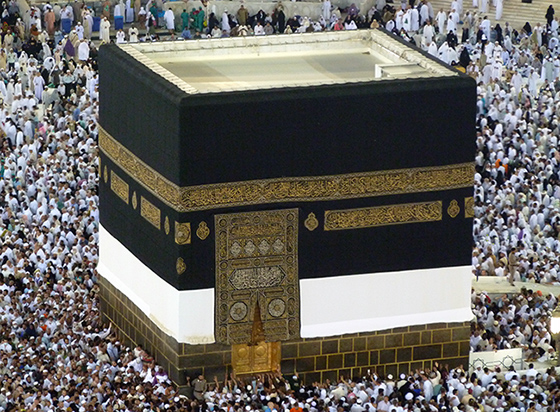 What are all five identifiers of the Kaaba?
What are all five identifiers of the Kaaba?
Rededicated by Muhammad in 631-632. Granite masonry, covered with silk curtain, and calligraphy in gold and silver-wrapped thread. Mecca, Saudi Arabia.
Mecca is the spiritual center of Islam, most sacred. A large mosque surrounds the Kaaba. Spiritual pilgrimage. Covered by Kiswa (cloth) and is changed annually. Has been repaired many times since Muhammad.
 What are all 5 identifiers of Dome of the Rock?
What are all 5 identifiers of Dome of the Rock?
Islamic. Umayyad. 691-692 CE. Multiple renovations, stone masonry and wood roof decorated with glazed ceramic tile, mosaics, and gilt aluminum and bronze dome.
Domed wooden octagon. Pilgrimage site for religious. Where Adam was born, where Abraham nearly sacrificed Isaac and where Muhammad ascended to heaven. Christians are kept out. Not a mosque.
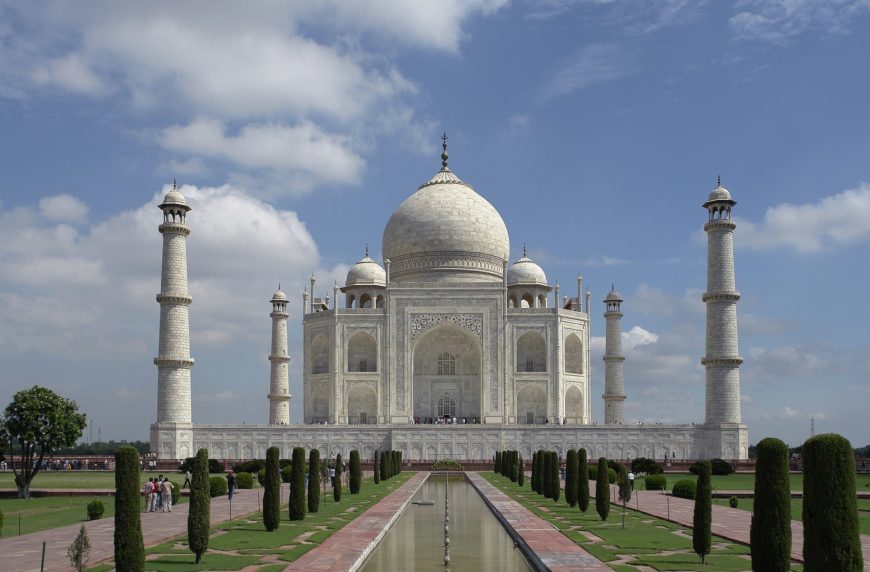 What are all 5 identifiers of the Taj Mahal?
What are all 5 identifiers of the Taj Mahal?
1632-1653. Stone masonry and marble with inlay of precious and semiprecious stones, gardens. Agra. Uttar Pradesh, India.
Symmetrical harmony of design. One large arch flanked by two smaller arches. Onion shaped dome. Minarets. Motifs of flowering plants. Funerary garden dedicated to wife of Shah Jahan (died in childbirth). The gardens found in heaven in the Islamic tradition.